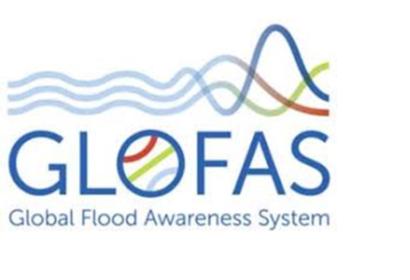Floods are impacting many communities around the world, triggering devastating disasters as in the case of the recent floods in Southern Brazil in May 2024, in the South Eastern United States in September 2024, and more recently in Valencia, Spain at the end of October 2024. Since several decades ago, early warning systems have been implemented to minimize impacts in case of floods and other hazards. Flood forecasting is one of the key essential elements of any flood early warning systems. Other essential elements include risk assessments, communication channels to issue and disseminate warnings, and preparedness for an early action to an early warning. In recent years, the Global Flood Awarenes System (GloFAS) was launched by the Copernicus programme to contribute to flood forecasting efforts worldwide.
The second edition of the book entitled Flood Forecasting: A Global Perspective was recently launched and it covers hydrologic forecasting systems on both a national and regional scale. This updated edition includes a new chapter On the Operational Implementation of the Global Flood Awareness System (GloFAS).
This chapter provides a comprehensive overview of GloFAS version 4, serving as a valuable resource for both system users and flood forecasting researchers. Additionally, the book also covers GloFAS’s continental counterpart, the European Flood Awareness System (EFAS), in a separate chapter.
What's covered in the GloFAS Chapter?
- History and organizational Structure of GloFAS: The chapter outlines significant milestones in the system's development, starting from its establishment in 2011 to the release of GloFAS version 4 in 2023. It also details the organizations involved in the system's development and daily operations.
- Forecasting Modelling Chain: Readers are introduced to the system’s forecasting chain, which spans from meteorological forcings to hydrological modelling, providing an understanding of the processes involved in flood forecasting.
- Product Descriptions: The chapter showcases GloFAS’s core products, illustrating the range of critical information that can be extracted from its forecasts, such as medium-range forecasts, impact forecasts, and seasonal forecasts.
- Data Dissemination: Various methods of disseminating GloFAS data are covered, including access routes via the GloFAS website and raw data retrieval systems, ensuring that users can access the data they need.
- User Engagement: The chapter emphasizes the importance of user engagement in the ongoing development of GloFAS, highlighting how interactions with end users drive improvements in the system's accuracy and usability.
- Case Studies: Five real-life flood case studies are included to demonstrate the practical benefits of GloFAS’s forecasting information and how it has been used in operational scenarios to mitigate flood risks.
The chapter serves as a reflection on the GloFAS’s past achievements and highlights the increasing importance for collaboration in its development.
The book furthermore covers solutions to common issues with a wide range of approaches to address the difficulties inherent in the development, implementation and operational success of national-scale flood forecasting systems. Special attention is given to recent advances in machine learning techniques for flood forecasting. Overall, the information will lead to improvements of existing systems and provide a valuable reference on the intricacies of forecast systems in different parts of the world.
Reference
Matthews, G., Baugh, C., Barnard, C., Carton De Wiart, C., Colonese, J., Grimaldi, S., Ham, D., Hansford, E., Harrigan, S., Heiselberg, S., Hooker, H., Hossain, S., Mazzetti, C., Milano, L., Moschini, F., O'Regan, K., Pappenberger, F., Pfister, D., Rajbhandari, R. M., Salamon, P., Ramos, A., Shelton, K., Stephens, E., Tasev, D., Turner, M., van den Homberg, M., Wittig, J., Zsóter, E., & Prudhomme, C. (2024). On the operational implementation of the Global Flood Awareness System (GloFAS). In T. E. Adams, C. Gangodagamage, & T. C. Pagano (Eds.), Flood forecasting: A global perspective (2nd ed., pp. 299-350). Elsevier.

